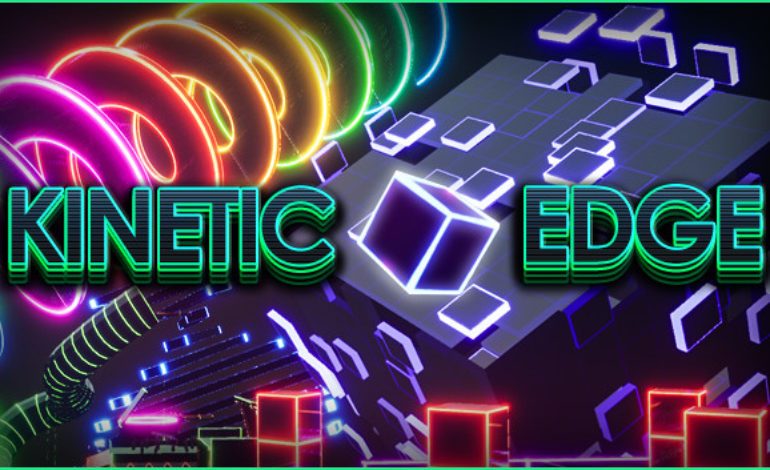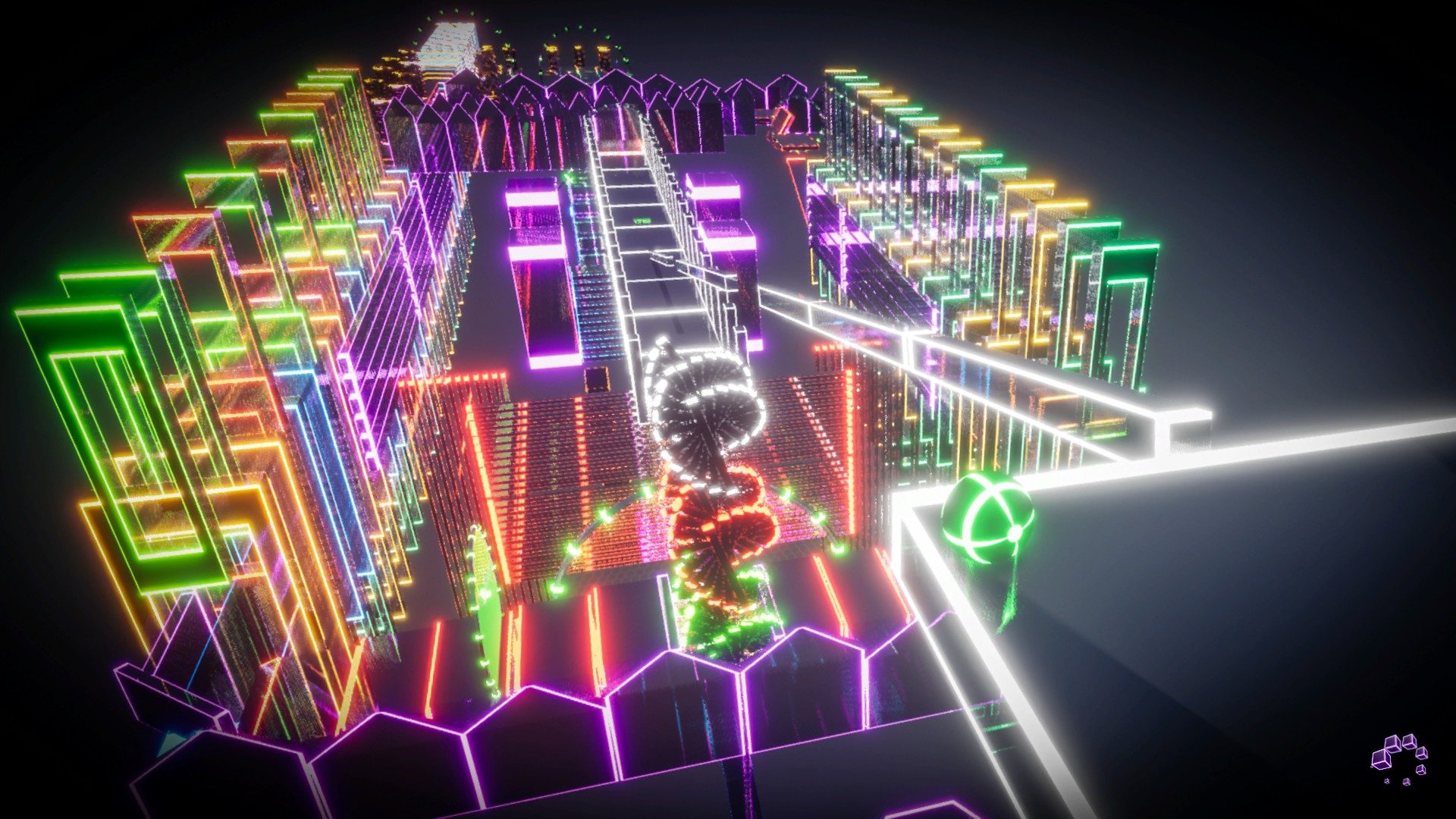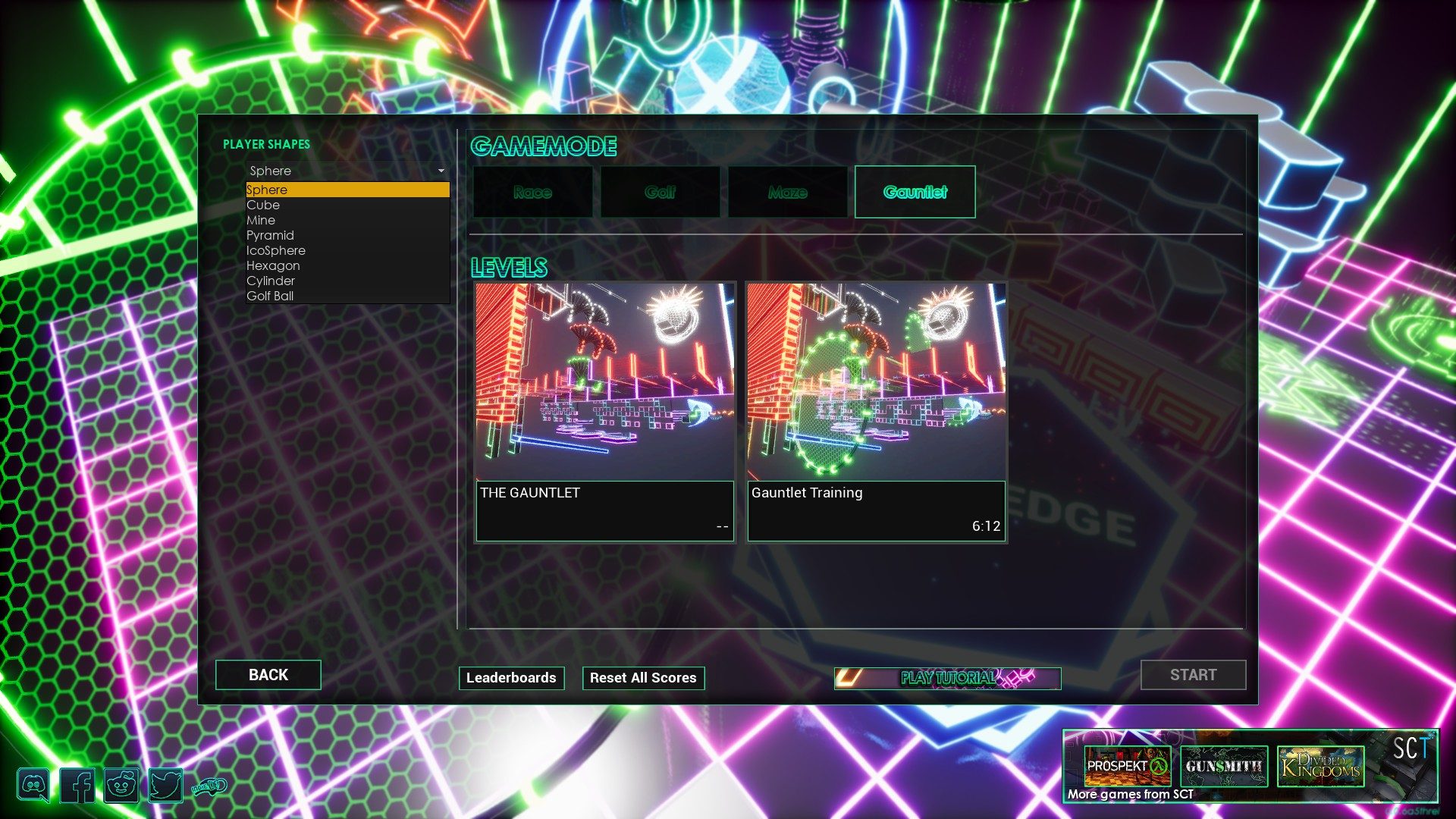

A Marble Madness-esque physics platformer with a focus on multiplayer, Kinetic Edge shows great promise. Unfortunately, the execution of the currently-released content does not live up to the simple beauty of its premise. The foundation of Kinetic Edge is a solid one, but strange game design choices, occasionally lackluster course design, and general lack of polish keep it from reaching its potential.
A straightforward premise requires easy-to-understand gameplay, so it’s fortunate that the fundamental gameplay mechanics of Kinetic Edge mostly succeed on that front. The default shape the player controls is a simple sphere, and moving the sphere around feels appropriately smooth and weighty. The player also occasionally controls a variety of other shapes, such as a triangle or cylinder, which add an interesting twist to the gameplay due to how they affect the control and physics. The player can choose to replace the default sphere with one of these shapes, which adds a small but fun bit of customization to the experience. In addition to a double jump, the player also has access to a dash that can be activated up to two times. The direction the player dashes in is dependent on the shape’s momentum rather than the direction of the analog stick, which is a smart design choice, as it allows the player to extend jumps and course-correct without nullifying the inherent challenge associated with the physics engine. Out of the main obstacle courses, there are some notable highlights. The last one under the Race menu disables the player’s dash and offers a unique two-dimensional perspective with tightly-placed obstacles, and the Gauntlet stage is a satisfyingly varied and lengthy challenge course that really tests the player on their knowledge of the controls.


As enjoyable as the gameplay can be, it is plagued with a myriad of issues, one of which can be found as early as the tutorial stage. Most of the stage is as straightforward as one would expect, but the section that teaches the double jump tasks the player with landing on a high ledge that most normal double jumps cannot reach. With some experimentation, it turns out that if the player taps the jump button right after their first jump, the double jump will go higher up than normal. For whatever reason, the game does not explain this small but crucial detail, and I can see many players getting unnecessarily stuck in the tutorial because of this. It does not help that the higher double jump itself is somewhat counterintuitive, as it is usually standard for a double jump performed at the apex of the first jump to propel the character higher. Of course, since this is not difficult to pull off, players are probably going to figure out the higher double jump eventually, but it would have helped players much more if the developers lowered the height of the platform and then put a second platform soon afterward that taught players specifically how to do the higher double jump.


The issues unfortunately don’t end there, as the level design does not feel anywhere near as tight as it should be. Several stages feature slow-moving platforms that the player has no choice but to stand around and wait on as they get carried to the next destination. This type of scenario can be found in many other games, but they feel out of place in a frenetic, arcade-like experience such as this, and while these can be justified as a small break in the action, they interrupt the pace far too frequently. Even more egregious is the sheer amount of empty space some levels have. The second-to-last Race level is especially bad about this; several sections involve the player simply holding forward for extended periods of time, and this issue only gets worse after the last checkpoint. And the lackluster design choices only get worse when the player enters the Maze levels. Other than their procedural generation, there is absolutely nothing that makes these mazes unique. They look and feel just like a standard pencil maze, which feels like an incredibly uninspired way to explore what are otherwise solid gameplay mechanics.


Outside of these design issues, the package as a whole could use more polish. I encountered more than one spot where my shape fell through the floor, forcing me to restart from the last checkpoint. There is a Golf mode with its own momentum-based courses, but there were times when the ball got snagged on what looked like completely flat geometry after I made my shot. This issue makes it difficult to treat the Golf mode as anything other than a distraction since, if someone tries to play it seriously, they will inevitably get frustrated, as weird flaws with the course construction ruin otherwise accurate shots. Playing with a controller also leads to some weird inconsistencies with the menus. During gameplay, the controller works fine, but sometimes the controller will not respond properly when navigating the main menu, and the menus that pop up after a level is completed are completely incompatible with the controller. The developers plan to support the game in the future, so hopefully these problems will be addressed in a future patch.
In the end, it is hard not to be disappointed with how Kinetic Edge has turned out so far. I can see this being a really fun title to come back to and master if the design were more well-considered, but the package feels so half-baked that it is not worth experiencing for more than a few hours. It is possible that future updates will make this a truly substantial experience, but at the moment it is nowhere near as kinetic as it should be.
Score: 5 out of 10
Reviewed on Windows 10 PC
Play games, take surveys and take advantage of special offers to help support mxdwn.
Every dollar helps keep the content you love coming every single day.
